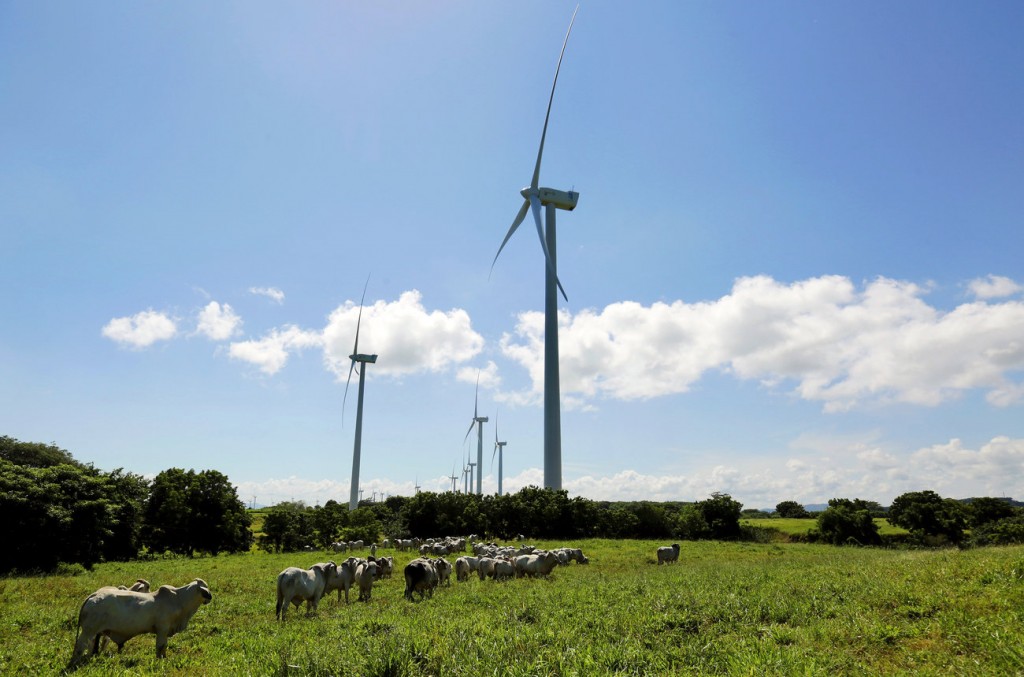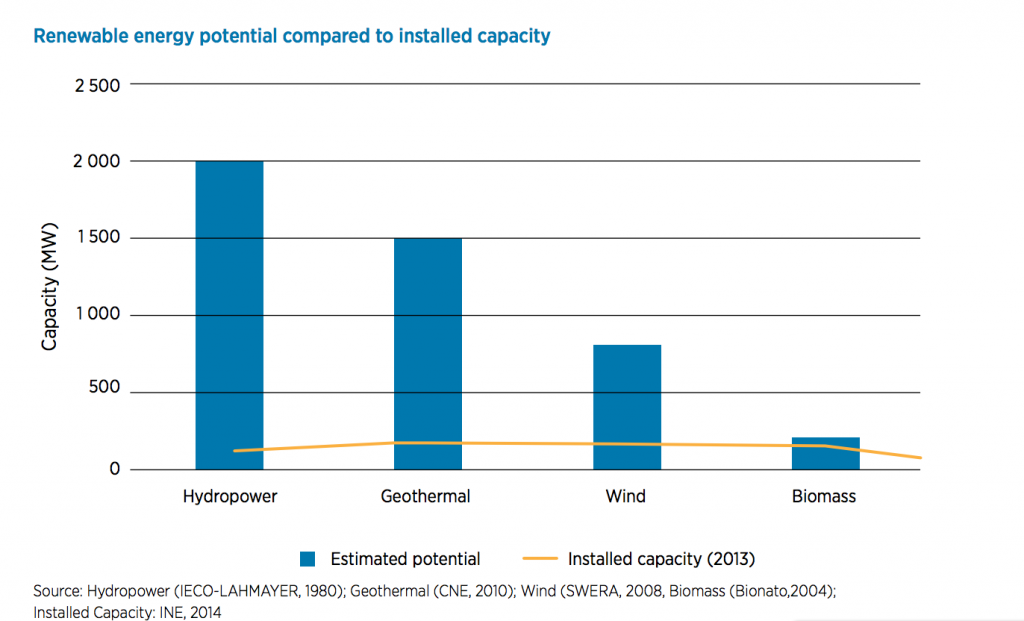Nicaragua has vast amounts of resources to make renewable energy both an enticing and plausible source of development. This is mostly due to its multiple geothermic resources resulting from volcanic activity, wind, sun, and water. Nicaragua is a renewable energy paradise that will continue to expand within the coming years in the form of geothermal plants, hydroelectric dams, and wind farms, to name a few.
Nicaragua tiene enormes cantidades de recursos para hacer energía renovable una posibilidad como una fuente de desarrollo. Esto es el resultado de sus recursos geotérmicos que vienen de actividad volcánica, viento, sol, y agua. Nicaragua es un paraíso de energía renovable que siguiera expandiendo en los próximos años en forma de plantas geotérmicas, presas hidroeléctricas, y granjas eólicas, para nombrar algunas.
Manager of the Amayo Wind farm, Javier Pentzke, says that its region is currently one of the best locations for wind energy. Although Nicaragua has just only began transitioning from imported fuel to generate power, it is developing quickly to a more energy efficient country.
Gerente de la granja eólica Amayo, Javier Pentzke, dice que su región es una de las mejores locaciones para energía eólica. Aunque Nicaragua solamente a comenzado la transición de utilizar combustible importado a generar energía, se esta desarrollando rápidamente como un país mas eficiente en energía.
One of the primary benefits of having renewable energy is that Nicaraguans don't have to worry about thermal plants having to turn fuel oil into electricity, which caused many problems in the past. Often times, problems with thermal plants would cause 12-hour blackouts, making electricity an unstable commonality. This also had egregious effects on the economy and made daily tasks in Nicaragua an encumbrance.

Uno de los beneficios primarios de utilizar energía renovable es que los Nicaragüeños no tienen que preocuparse de que las plantas termales conviertan gasolina en electricidad, por que a causado muchos problemas en el pasado. En muchas ocasiones los problemas con las plantas termales es que han causado apagones que duran por lo menos doce horas, haciendo electricidad una comunalidad inestable. Esto también tiene efectos enormes en la economía y hace actividades diarias en Nicaragua muy difíciles.
Renewable energy in Nicaragua helps produce almost 50% of electricity and that percentage is expected to rise up to 80% within the next few years. Comparatively, this is a lot higher than the amount of renewable energy that the United States uses which is about 13%.
La energía renovable en Nicaragua ayuda producir casi 50% de la electricidad y ese porcentaje esta esperando a subir hasta 80% en los próximos pocos años. Comparativamente, esto es mucho mas que la cantidad de energía renovable que los Estados Unidos utiliza que es como 13% solamente.
It wasn't until 2005 when the Nicaraguan government decided to make efforts in harnessing natural energy and putting it to use. This is when the shift to renewable energy actually began to take place. Policies were made which began to constitute the beginnings of project developments in Nicaragua.
No fue hasta el año 2005 cuando el gobierno nicaragüense decidió hacer esfuerzos en el aprovechamiento de la energía natural y poniéndola en uso. Esto es cuando el cambio a la energía renovable realmente comenzó a tomar lugar. Se formularon políticas que comenzaron a constituir el principio de la evolución del proyecto en Nicaragua.


